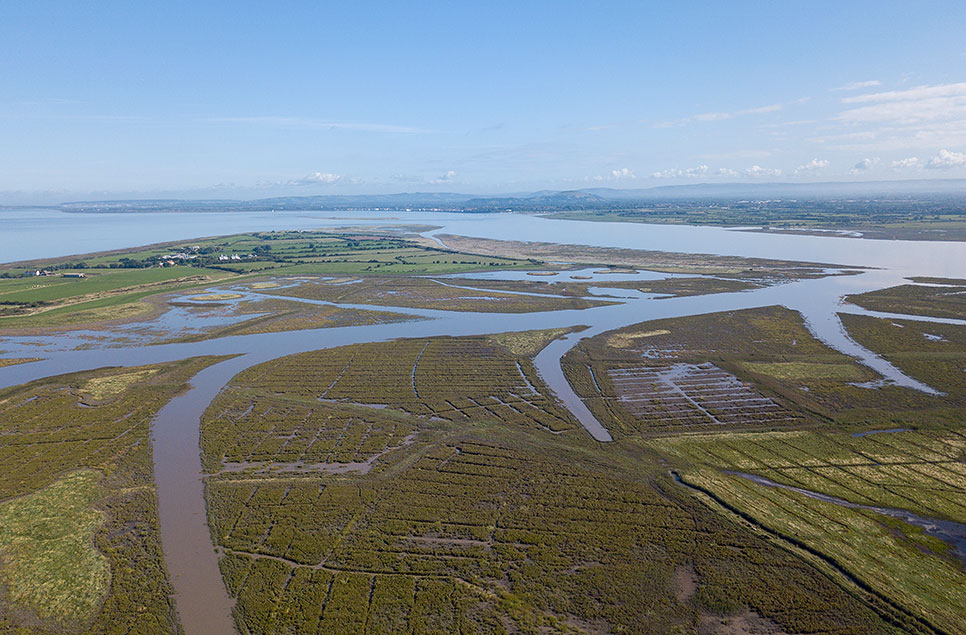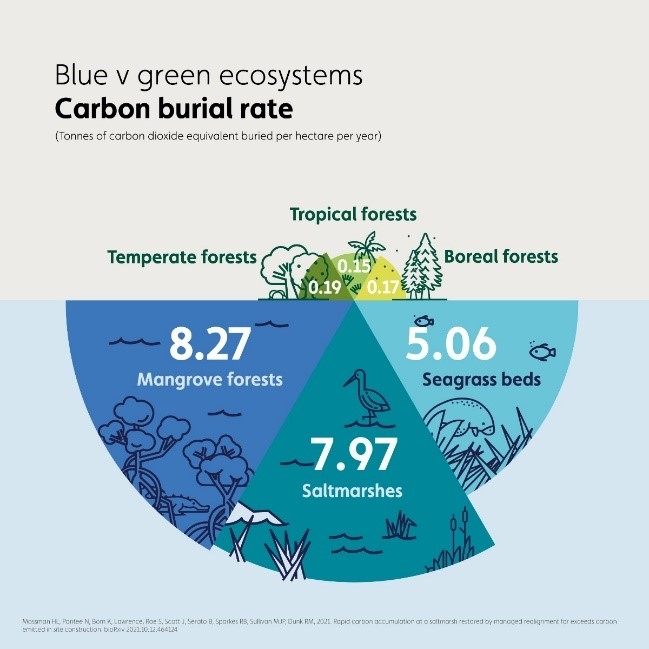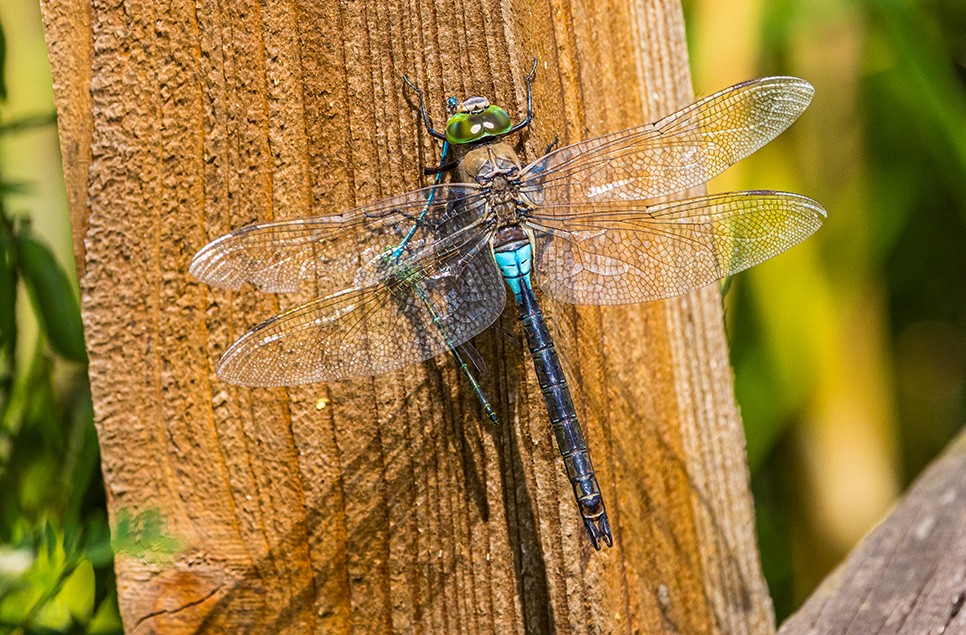Could creating more mud become as important as tree planting in fight against climate change?
A new report released today (3 November) outlines a quicker, more effective way to fight climate change than planting forests – creating and restoring more coastal saltmarshes full of carbon-storing mud.


As the world meets to agree its latest plans to combat climate change at the UN Climate Change COP, WWT’s Wetlands For Carbon Storage Route Map calls for the creation of at least 22,000 hectares[i] of coastal saltmarsh by 2050 to help the UK government reach its net zero targets. Reaching 22,000 hectares (an area twice the size of Bristol) could store 1.5 megatonnes of carbon dioxide every year - equivalent to taking 770,000 cars off the road for one year[ii]. This type of marine carbon storage is sometimes referred to as ‘blue carbon’
The government announced the creation of the UK Blue Carbon Evidence Partnership at the Climate COP in Glasgow last year which will work towards filling data gaps in our knowledge around blue carbon habitats, honing in our estimates on carbon burial rates. There is still a long way to go to incorporate this vital information into environmental policy, initiatives or even the release of funding to further this opportunity. However, organisations such as the UK Blue Carbon Forum of which WWT is a member are working towards coordinating partnership effort to ensure that marine and intertidal blue carbon habitats are restored and protected into the future.
WWT’s route map, which was shared with MPs at the recent Wetlands APPG meeting, sets out how government, the private sector and civil society can work together to create more saltmarsh, currently a rare habitat in the UK. As a priority, it is calling for the government to help release funding and support by incorporating saltmarsh creation into its key climate policies – specifically it’s Nationally Determined Contributions and the UK Greenhouse Gas Inventory.
The report, also calls for the Saltmarsh Carbon Code currently being developed by the Centre for Ecology and Hydrology (CEH) to be adopted by UK government and devolved administration by 2025. This code could unlock private investment to create, restore and effectively manage more saltmarsh – similar to the positive effect the existing woodland and peatlands code have had on investment in these habitats.
Dr James Robinson, member of the Saltmarsh Specialist’s Forum and WWT Director of Conservation, said:
In recent days, a variety of major UN reports have warned that we are close to irreversible climate breakdown. Against this grim background we simply do not have time to ignore efficient, fast and cost-effective solutions to climate change like saltmarsh.
Evidence is mounting that coastal wetlands such as saltmarsh could be more effective than trees in the fight against accelerating climate change. Statistics which tell us that peatlands and coastal wetlands put together store more carbon than all of the world’s forests combined, and that carbon is typically captured 40 times faster by saltmarsh than temperate forests[iii] are hard to ignore. The government have embraced tree planting in climate policy which we welcome, but we need the same approach for saltmarsh. As an island, we could, and should, be world-leading in harnessing the benefits of this vital habitat at scale.
Saltmarsh is so efficient at locking away carbon because when saltmarsh plants die, rather than decomposing and releasing their carbon back into the atmosphere as plants do when they die above ground, they become buried in low-oxygen mud locking away the carbon, in some cases indefinitely. In addition, as sea levels rise more sediment layers get buried and more carbon gets locked beneath the mud.
In a speech in 2019, Martha Rojas Urrego, Secretary General of the Ramsar Convention on Wetlands said:
We are not powerless to tackle climate change in the little time we have. The solutions are staring us in the face and wetlands are among them. But the world has to fully grasp wetlands’ relationship to climate change. We must start by ending the destruction and degradation of wetlands and restoring lost ones.
The route map makes it clear that creating more saltmarsh should also be done alongside effective protection and management of the UK’s existing saltmarsh, to make sure the carbon remains buried.
Saltmarshes bring a range of other benefits beyond storing carbon. They help reduce flood risk, improve water quality through filtering pollutants, are globally important for migrating water birds, provide a home to 40 species that only exist in saltmarsh[iv] and offer new economic opportunities to local communities including farming. They are conservatively estimated to be worth around £3 million annually to the commercial landings of European seabass, common sole and European plaice[v].
The release of this route map follows the publication of WWT’s Creating Urban Wetlands for Wellbeing Route Map released earlier this year. It’s part of a wider Blue Recovery push to ensure wetlands play a leading role in supporting the health and wellbeing of the nation, and the planet.
Pledge your support for more wetlands[i] 22,000 hectares is the potential saltmarsh outlined in the report by Natural Capital Committee.: Eftec 2015. The Economic Case for Investment in Natural Capital in England. Final Report For the Natural Capital Committee, eftec, London
[ii] Estimated CO2 equivalent and cars off road figures based on scaling up the carbon sequestered at WWT Steart Marshes. Mossman HL, Dunk RM et al., 2021.w Rapid carbon accumulation at saltmarsh restored by managed realignment far exceeds in site construction. Manchester Metropolitan University. BioRxiv
[iii] McLeod, E. et al. 2011. A blueprint for blue carbon: toward an improved understanding of the role of vegetated coastal habitats in sequestering CO2. Frontiers in Ecology and the Environment 9, 552–560.
[iv] Boorman, LA., 2003 Saltmarsh Review. An overview of coastal saltmarshes, their dynamic and sensitivity characteristics for conservation and management. JNCC Report, No. 334
[v] McCormick, H. et al. 2021. Using a residency index to estimate the economic value of coastal habitat provisioning services for commercially important fish species. Conservation Science and Practice 3:30



